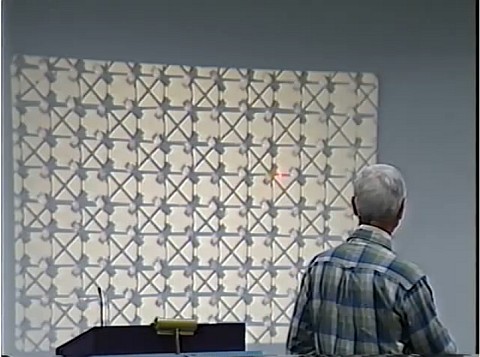Here is another video from some VHS tapes I digitized from the “Bay Area Computer History Perspectives” series of lectures. These lectures were sponsored by Sun Microsystems Inc in the mid-90’s and were part of the first activities of the Computer History Museum. I was lucky enough to get some of these tapes directly from Jeanie Treichel, when I was an intern at Sun Labs back in 2008. Jeanie was an important figure in organizing these lectures, along with Peter Nurkse.
Click on the screenshot to reach the video hosted on PicasaWeb:
 |
| From Computer History Videos |
This second lecture I make available is entitled “TX-0, TX-2 and LINC” (10/26/1998). The lecturers discuss the history and architecture of the early MIT programmable computers: TX0, TX-2 (the never-built TX-1 is mentioned) and the LINC, which was one of the first real-time lab computers with display and keyboard. Wes Clark, who was the principal architect for all 3 machines, leads the lecture.
The lecturers are:
Here is a short lost of topics discussed in this 2-hour long video:
- Wesley A Clark giving a good history of TX0 and then TX-2.
- The advent of the Core memory and its effect.
- Going from tubes to transistors.
- Demo of Sketchpad (Ivan Sutherland’s groundbreaking drawing program).
- The TX-2 architecture
- Lots of trivia about work in the trenches of early research computers.
- Good stories about the Xerographic printer they had (based on a photocopier, that required fire extinguishers if bugs in the code made the paper go in too slow).
- The horn of the computer to prevent people from frying when the power got turned on.
- Misc trivia about the TX-2
- Pictorial descriptions of the LINC
- Multiple versions of the LINC
- Screen shots showing assembly listing on the oscilloscope
- Screen shots of graphics
This video is really enlightening for anyone in the younger generations of computer engineers and computer scientists. I strongly recommend it, especially since it shows the early stages of video display development on computers.